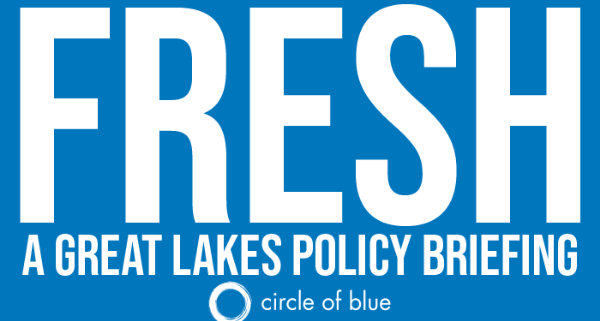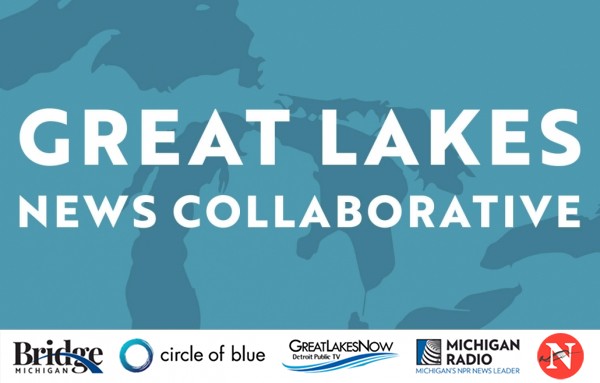Fresh, September 4, 2024: Minnesota Legislature Aims to Reduce PFAS Pollution From 3M Plant
September 4, 2024
Fresh is a biweekly newsletter from Circle of Blue that unpacks the biggest international, state, and local policy news stories facing the Great Lakes region today. Sign up for Fresh: A Great Lakes Policy Briefing, straight to your inbox, every other Tuesday.
— Christian Thorsberg, Interim Fresh Editor
This Week’s Watersheds
- Blue-green algae is becoming more common on Lake Superior since it was first reported in 2012.
- Striving to reduce the dispersal of PFAS into the Mississippi River, Minnesota state legislators have proposed a new pollution permit for 3M’s factory just outside the Twin Cities.
- New York’s Finger Lakes, which account for more than 30 percent of the Lake Ontario drainage, have received a $42 million investment for water quality improvements.
- Following a decade of substantial flooding, a federal grant will help communities in Wisconsin, Michigan, and Minnesota build resilience along Lake Superior’s coast.
A new study from the Indiana Chamber Foundation warns of future water conflicts without a statewide management plan.
“What we have to do is think about how future demand might be distributed and how that looks, whether it’s a matter of organic growth from cities or whether we’re actually building mega developments in particular areas. In either case, we have to understand what the effects of high demand for water might be in different basins.” — Jack Wittman, principal water resource hydrologist for INTERA, an environmental consulting firm.
A recent dispute over water supply in Tippecanoe County has highlighted a larger discussion of Indiana’s water future, Indiana Public Radio reports. While there are currently no water shortages, continued growth and development is likely to strain supplies — a predicament the state must be ready to address, the Indiana Chamber Foundation recently argued.
A new 10-year update on the state’s water policy and planning shows that Indiana’s water, while currently plentiful, is not evenly distributed. Central and southern Indiana, being further from Lake Michigan, have less access to streams and waterways. Across the state, groundwater is being withdrawn quicker than it has in the past. Water withdrawals for industrial use are declining, though the report urges a more dedicated statewide effort for wastewater recycling.
The report further recommends the state place more emphasis on cohesive planning, local government involvement, and consistent funding for water research and data monitoring.
Fresh from the Great Lakes News Collaborative
- Great Lakes winter trends mean warmer and wetter storms — Michigan Public
- PFAS Roundup: Wisconsin PFAS remediation funds still frozen due to partisan divide — Great Lakes Now
- As Consumers mulls selling 13 dams, some in Michigan fear another disaster — Bridge Michigan
- Ontario is taking cues from Enbridge Gas — a fossil fuel giant ‘freaking out’ about its future — The Narwhal
Bridge Michigan, Circle of Blue, Great Lakes Now at Detroit Public Television, Michigan Public and The Narwhal work together to report on the most pressing threats to the Great Lakes region’s water. This independent journalism is supported by the Charles Stewart Mott Foundation. Find all the work here.
3M Plant Facing New Permit for PFAS in Minnesota
For more than two decades the chemical manufacturer 3M has operated under the same permit to discharge wastewater from its facility in Cottage Grove, Minnesota. But the plant — which produces per- and polyfluoroalkyl substances (PFAS) — has been “the epicenter of the global PFAS problem,” Minnesota Public Radio reports.
Earlier this year, the company reached a settlement totaling more than $10 billion for the environmental and public health harms of dumping of “forever chemicals” into waterways. Now the Minnesota Legislature is seeking to update 3M’s pollution permit.
The 400-page proposed permit would require 3M to reduce the amount of “forever chemicals” in its wastewater “to levels so low they can’t be detected by current technology.” The company would also be required to invest further in the monitoring of groundwater contamination and fish health, and publish these findings.
While the permit — which represents “the first time Minnesota has required an industry to limit PFAS” — is being celebrated for its step to curb pollution, some say it isn’t going far enough. There is leeway for 3M to still release a slim amount of the chemicals, whose effect on the environment is largely unstudied. And the facility would be allowed to discharge 15.2 million gallons of treated wastewater per day into a creek that connects to the Mississippi River — up from the five million to six million gallons per day it has more recently released.
One permit critic is the Prairie Island Indian Community, located downstream from where 3M sends its wastewater. Among other concerns, the community cites the state’s “continued reactive versus proactive approach” to protecting the area’s waters. The public comment period for the permit ended on August 30.
In the News
Finger Lakes: New York announced a $42 million investment “to enhance water quality and combat harmful algae blooms” in the Finger Lakes, Finger Lakes Daily News reports. The watershed’s eastern half accounts for more than 30 percent of Lake Ontario’s drainage, and has recently experienced an uptick in toxic algae. The funding will also support several regional initiatives aimed at reducing agricultural runoff, building flood resiliency, and improving soil health.
Flood Resilience Grant: A $1.45 million federal grant — one of 19 given nationwide — has been awarded to communities in Wisconsin, Minnesota, and Michigan along Lake Superior’s shore for flood resilience projects. “Between 2012 and 2022 there were six federal disaster declarations due to flooding, erosion and damage to infrastructure,” the Milwaukee Journal Sentinel reports. Three of these were considered 500- to 1,000-year flood events. According to the Sentinel, four watersheds will receive the bulk of the funds: “the Nemadji River watershed that spans Minnesota and Wisconsin; the Fish Creek and White River watersheds that empty near Ashland, Wisconsin; and the Montreal River watershed, which spans Wisconsin and Michigan’s upper peninsula.”
Looking Ahead
Toxic blue-green algal blooms were spotted in two Lake Superior bays last week in the Apostle Islands National Lakeshore, the latest sightings in a growing trend that has environmentalists concerned for the lake’s health, Wisconsin Public Radio reports. The blooms dissipated “within hours,” but are becoming more common since they were first identified in Lake Superior in 2012 following a series of floods. The public can use this Google Form to submit any sightings of blooms, which are not an invasive species but can pose a threat to human and animal health.
Upcoming Events
September 9-10 — The Great Lakes-St. Lawrence Legislative Caucus Annual Meeting — learn more
September 17-19 — Lakebed 2030 Conference — learn more
September 24-25 — Great Lakes Dredging Team 2024 Annual Meeting — learn more
September 25-26 — Great Lakes Drinking Water Conference — learn more
October 1-3 — Great Lakes Beach Association Conference — learn more
Other News
Kalamazoo River — After 20 years, a dam removal project on the Kalamazoo River is finally nearing completion, Michigan Public reports.
Detroit Sewer Repair — City officials unveiled a new plan to replace private sewer lines for homeowners who were affected in 2021 floods, the Detroit Free Press reports. Approximately $43 million in federal funding will aid the effort.
Christian Thorsberg is an environmental writer from Chicago. He is passionate about climate and cultural phenomena that often appear slow or invisible, and he examines these themes in his journalism, poetry, and fiction.









Leave a Reply
Want to join the discussion?Feel free to contribute!